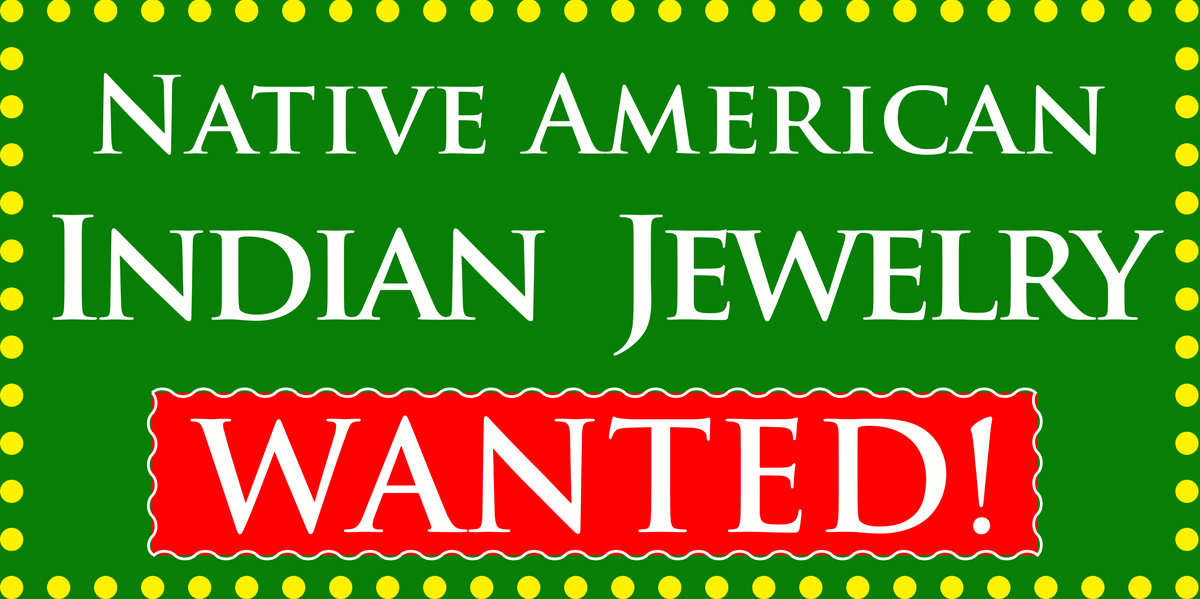Gold Buyer Albuquerque Trusts
NATIONAL JEWELRY BUYERS
Native American Jewelry Wanted!


Your old Native American jewelry is not just "scrap silver". It is collectible jewelry that will be worn (not melted), and we promise to make you our absolute best offer.
Many gold buyers and pawn shops have little knowledge about Native American jewelry, and often "scrap" the jewelry for just the silver content. What a shame!
We love and appreciate Native American jewelry and understand its value. Our strong network of wholesale buyers and retail shops allows us to pay you top dollar.
Note: Please do NOT polish your jewelry since it may affect the antique/ vintage value.
We buy all types of Native American jewelry made with sterling silver. Squash blossom necklaces, concho belts, bracelets, rings, pendants, earrings, pins & broaches, bolo ties, buckles, watch bands, and more!
Selling Your Native American Jewelry: What’s It Really Worth?
While Native Americans began crafting silver jewelry nearly 200 years ago, the 1970s can be referred to as the industry’s “gold rush.” Turquoise squash blossom necklaces, concho belts and bear-claw watch bands were the rage. What man or woman could have survived without a turquoise ring and matching feather earrings? The infatuation with it was extraordinary.
Fast forward 40 years or so and indeed things have changed. Aside from tourists wanting a souvenir on their visit to the Southwest, or baby boomers reminiscing the "good ol' days," the industry is struggling. Demand for the jewelry has simply withered. But is it dead altogether? Is Grandma’s treasure chest of turquoise and coral jewelry worthless now?
“Absolutely not,” insists Romie Salem of National Jewelry Buyers, a prominent gold and silver exchange in Albuquerque, New Mexico. “While younger folks in general aren’t too interested in the jewelry, there are plenty of aged 50+ enthusiasts and collectors.”
For those looking to sell their Native American pieces, we asked Salem for some guidance. How does National Jewelry Buyers, for example, determine what a Navajo turquoise bracelet is worth?
“There are a number of factors, each of which is monumentally important,” explains Salem:
AGE/ERA: Items that are pre-1960s fetch a premium over contemporary jewelry because they were made in smaller quantities. Mass production in factories and workshops began in the 1970s, when Indian jewelry became very popular.
CONDITION: As with anything, items that are in good condition are worth more. Damage of any kind (especially cracks in silver or stones) will lower the value. Badly damaged items are often too costly to repair, and as such may only be worth their silver scrap value. “Tarnish or discoloration from age is OK and does not lower the value,” says a smiling Salem. “In fact, the tarnish may increase its potential antique/vintage value—so do NOT polish older items!”
ARTIST: There are a number of famous artists that are highly collectible. “Oftentimes pieces will not be stamped by the artist—and that’s OK,” says Salem to our surprise. “Artists rarely stamped their pieces prior to 1960.”
GEMSTONES (if applicable): Rare turquoise, high quality coral and some others are much more valuable than black onyx, mother-of-pearl, pink shell, etc.
SIZE & WEIGHT: Obviously a large, heavy necklace will likely be worth more than a ring in terms of silver content.
DEMAND: Some items, such as watch bands, are in very low demand and therefore less valuable.“When selling your Native American Indian jewelry, be sure to deal with an experienced and knowledgeable buyer. Ordinary pawn shops and scrap buyers, even with the best of intentions, may simply not recognize the true value of your pieces,” advises Salem.
